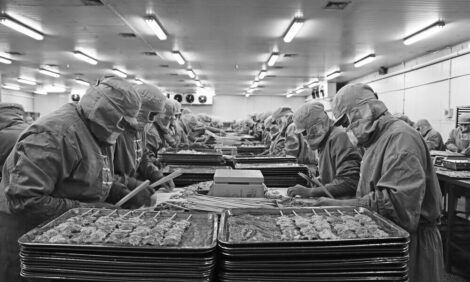



Fewer Antibiotic-Resistant Bacteria on Organic Farms
US - A study at the University of Maryland's School of Public Health suggests that removing antibiotic use from large-scale US poultry farms can result in immediate and significant reductions in antibiotic resistance for some bacteria.Antibiotic use in conventional animal food production in the United States has created public health concern because it has been shown to contribute to the development of antibiotic-resistant bacteria that can potentially spread to humans. A new study, led by Dr Amy R. Sapkota of the University of Maryland School of Public Health, provides data demonstrating that poultry farms that have transitioned from conventional to organic practices and ceased using antibiotics have significantly lower levels of drug-resistant enterococci bacteria.
The study, published in Environmental Health Perspectives (online today, 10 August 2011), is the first to demonstrate lower levels of drug-resistant bacteria on newly organic farms in the United States and suggests that removing antibiotic use from large-scale US poultry farms can result in immediate and significant reductions in antibiotic resistance for some bacteria.
Dr Sapkota, an Assistant Professor with the Maryland Institute for Applied Environmental Health, explained: "We initially hypothesised that we would see some differences in on-farm levels of antibiotic-resistant enterococci when poultry farms transitioned to organic practices. But we were surprised to see that the differences were so significant across several different classes of antibiotics even in the very first flock that was produced after the transition to organic standards. It is very encouraging."
Dr Sapkota and her team, which included R. Michael Hulet (Pennsylvania State University), Guangyu Zhang, Sam Joseph and Erinna Kinney (University of Maryland), and Kellogg J. Schwab (Johns Hopkins Bloomberg School of Public Health), investigated the impact of removing antibiotics from US poultry farms by studying 10 conventional and 10 newly organic large-scale poultry houses in the mid-Atlantic region. They tested for the presence of enterococci bacteria in poultry litter, feed, and water, and tested its resistance to 17 common antimicrobials.
"We chose to study enterococci because these microorganisms are found in all poultry, including poultry on both organic and conventional farms. The enterococci are also notable opportunistic pathogens in human patients staying in hospitals. In addition, many of the antibiotics given in feed to farm animals are active against Gram-positive bacteria such as the enterococci. These features, along with their reputation of easily exchanging resistance genes with other bacteria, make enterococci a good model for studying the impact of changes in antibiotic use on farms," Dr Sapkota explained.
While all farms tested positive for the presence of enterococci in poultry litter, feed, and water as expected, the newly organic farms were characterised by a significantly lower prevalence of antibiotic-resistant enterococci. For example, 67 per cent of Enterococcus faecalis recovered from conventional poultry farms were resistant to erythromycin, while 18 per cent of E. faecalis from newly organic poultry farms were resistant to this antibiotic.
Dramatic changes also were observed in the levels of multi-drug resistant bacteria (organisms resistant to three or more antimicrobial classes) on the newly organic farms. Forty-two per cent of E. faecalis from conventional farms were multi-drug resistant, compared to only 10 per cent from newly organic farms, and 84 per cent of E. faecium from conventional farms were multi-drug resistant compared to 17 per cent of those from newly organic farms. Multi-drug resistant bacteria are of particular public health concern because they can be resistant to all available antibiotics, and are therefore very difficult to treat if contracted by an animal or human.
Dr Sapkota continued: "While we know that the dynamics of antibiotic resistance differ by bacterium and antibiotic, these findings show that, at least in the case of enterococci, we begin to reverse resistance on farms even among the first group of animals that are grown without antibiotics. Now we need to look forward and see what happens over five years, 10 years in time."
She expects that reductions in drug-resistant bacteria on US farms that "go organic" are likely to be more dramatic over time as reservoirs of resistant bacteria in the farm environment diminish.
'Lower Prevalance of Antibiotic-resistant Enterococci on US Conventional Poultry Farms that Transitioned to Organic Practices' was written by Amy R. Sapkota, R. Michael Hulet, Guangyu Zhang, Patrick McDermott, Erinna L. Kinney, Kellogg J. Schwab, Sam W. Joseph and published in Environmental Health Perspectives online on 10 August 2011.








